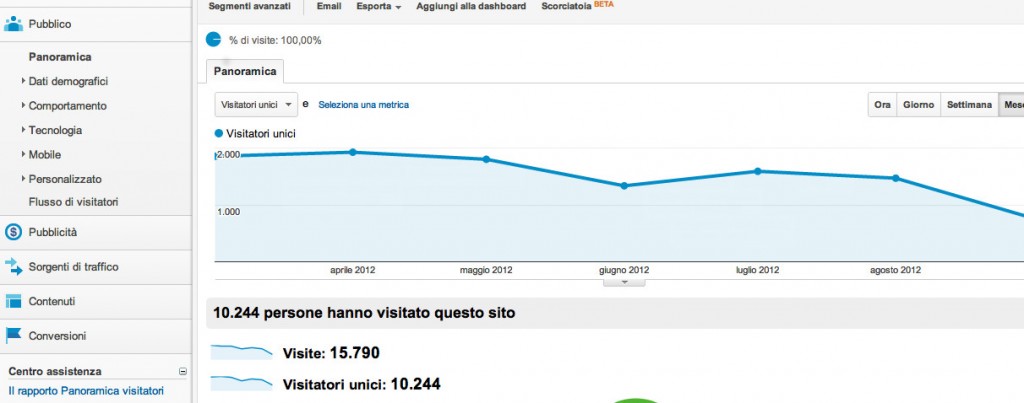Unique visitors – Google Analytics metrics
The number or unique visitors is one of the first metrics that we read, when we enter the Google Analytics panel for our website. It can be found under Audience –> Overview.
From the unique visitors metric we can understand several informations, for example:
- how many individuals (approximatively) accessed my website, during a given period?
- With respect to the promotional activities I’m carrying out, my audience is increasing or not?
- Overall, how many individuals I reached from the beginning of my activity?
At a first glance, the meaning of unique visitors seems easy to understand, but this metric gets often confused with other metrics, as “visits”, and two other metrics that were used by Google Analytics and now have been eliminated: visitors and absolute unique visitors.
Nowadays, visitors and unique visitors mean the same thing: how many individual browsers accessed the website, in a given period (a browser is the piece of software you are using surf the internet and view this page in this moment: Internet Explorer, Firefox, Chrome, Safari, etc.).
For example, if a person (let’s call it: John) this morning visited my website from his PC at home, and this evening came back using his iPad, he actually used two different browsers to access the website, and Google Analytics will count two unique visitors even if the person is the same (unless his browsers were synchronized and other technicalities, but ok, you got the meaning…).
More exactly, when a user visits your website for the first time, Google Analytics “tags” his browser with a visitor identifier that gets stored in a 2-years-lasting GA’s __utma cookie. Google Analytics counts the unique visitors as the sum of the __utma cookies that accessed the website in the selected period.
Therefore, if a user this morning visits my website, in the afternoon deletes the cookies in his browser (e.g. for privacy concerns) and in the evening visits again my website with the same browser, it will still be counted as two unique visitors.
To summarize, due to several technical reason related to the way this metric is measured, it is reasonable to assume that the unique visitors value that you read in Google Analytics is slightly overestimating the number of real individuals that accessed your website.
It should be noted that it is not possibile to sum values of unique visitors from different periods. For example, if on January my website had 100 unique visitors, and on February it had 200 unique visitors, I can’t conclude that on January and February it had 100+200 = 300 unique visitors, because an unknown part of the visitors in January may have visited the website also in February.
Hope it was helpful!



